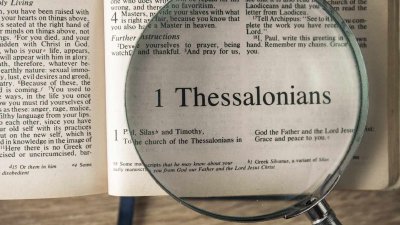In today's sermon, we delved into the profound and transformative doctrine of the resurrection, a cornerstone of our Christian faith. The resurrection is not merely a future event to be anticipated but a present reality that shapes our lives, our hope, and our mission in this world. We explored the parable of the wheat and the tares, a vivid illustration of the Kingdom of Heaven, where the good seed represents the sons of the Kingdom, and the tares, the sons of the wicked one. This parable, found in Matthew 13:24-30, 36-43, serves as a sobering reminder that a day of reckoning is coming when the righteous will shine forth as the sun in the Kingdom of their Father.
We affirmed that the evidence of Christ's resurrection is overwhelming, not only historically but also in the transformation it brings to our lives. The resurrection is a testament to the power of Christ to change lives, restore families, and bring prodigals home. It is the foundation upon which the doctrine of the resurrection of both the righteous and the unrighteous rests. This doctrine is not only a future hope but also a present comfort and a call to live a godly life in anticipation of Christ's return.
The resurrection is intricately linked with eschatology, the study of end times, and soteriology, the study of salvation. It is part of the grand narrative of creation, fall, redemption, and restoration. The resurrection affects our morality and our pursuit of a righteous life, as it is the righteous who will inherit eternal life with Christ, while the unrighteous face eternal punishment.
We also touched on the doctrine of the Rapture of the church, a belief that the Apostle Paul introduced to the early Church of the Thessalonians. This doctrine provided hope and encouragement to a church that was growing weary and discouraged. It is a doctrine that we must not ignore or be willingly blind to, as it is integral to our understanding of the future and our place in it.
Key Takeaways:
1. The parable of the wheat and the tares teaches us that God's Kingdom is actively growing amidst opposition, and a final separation is inevitable. The righteous will be distinguished from the unrighteous, not by human effort, but by divine intervention at the harvest time. This parable encourages us to persevere in faithfulness, knowing that God will ultimately bring justice and vindication. [01:14:40]
2. The transformation in the lives of believers is a powerful testimony to the reality of the resurrection. When we observe the radical changes in our own lives and those around us, we witness the evidence of Christ's living presence. This transformation is a beacon of hope and a compelling reason to share the gospel with others. [01:29:36]
3. The resurrection is not an isolated doctrine but is woven into the entire biblical narrative, from creation to restoration. It informs our understanding of the end times and our salvation, reminding us that our physical death is not the end but a transition to a new, glorified existence with Christ. [01:08:53]
4. The doctrine of the Rapture is a source of comfort and hope, not to be disregarded or treated with indifference. It serves as a reminder that our time on earth is temporary and that we should live with an eternal perspective, prioritizing the sharing of the gospel and the living out of our faith. [43:08]
5. The resurrection assures us of Christ's victory over death and sin. As believers, we are called to anchor our hope in this victory, allowing it to shape our daily lives and interactions. The resurrection empowers us to live righteously, knowing that our future is secure in Christ's triumph. [01:36:19]






